1
/
10
 www.provenwinners.com Pretty Much Picasso Supertunia
www.provenwinners.com Pretty Much Picasso Supertunia
Petunia
Petunia hybrids, Zones 10 to 11 or Annual
Everyone knows and loves petunias for their high-color impact in the garden. Recent hybrids offer stronger and denser branching (which means more flowers), bicolor flowers and patterns, and growth habits such as mounding, trailing and upright.
Why we love it: The color combos are bold, wild and crazy! Find everything from vibrant lime and magenta to classic white and purple.
Backyard tip: Take the design guesswork out of container planting when you pack your patio pots with several of one bicolored flower variety. It’s a win-win because you get an extra pop of color, but choosing plants is a breeze.
2
/
10
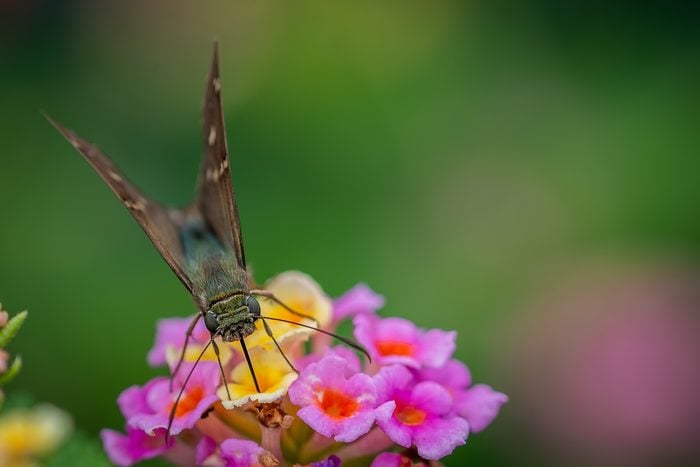 Courtesy Maedbh Ryan
Courtesy Maedbh Ryan
Lantana
Lantana camara, Zones 9 to 11 or Annual
For sunny spots, count on classic lantana in red, yellow, white, orange, lavender, pink and bicolor to bloom all summer long. Plant it in a container to jazz up a small space. Look for unique hybrids.
Why we love it: Many of your favorite fliers, like butterflies, hummingbirds and other pollinators, flock to showy and super easy-to-grow lantana’s bicolor flowers, while unwanted critters stay away.
3
/
10
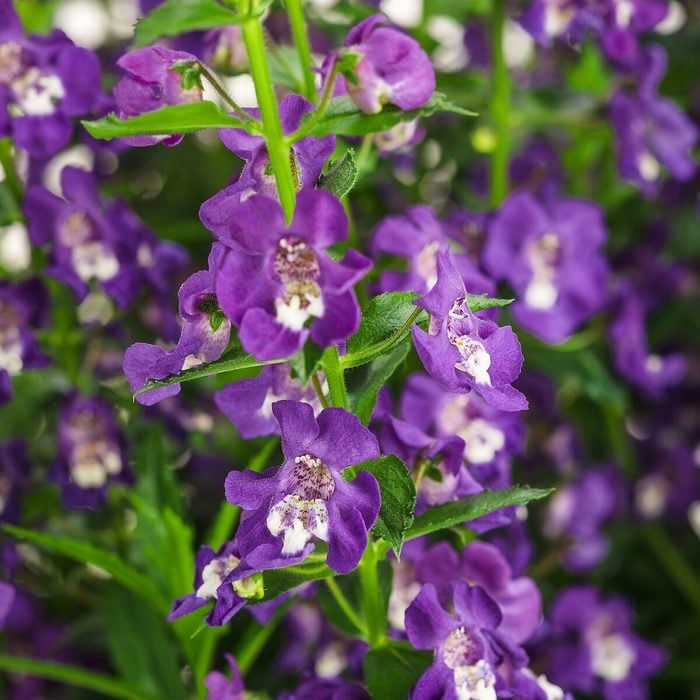 www.provenwinners.com
www.provenwinners.com
Archangel Blue Bicolor Angelonia
Angelonia angustifolia, Zones 10 to 11 or Annual
The dark purple and soft lilac blooms of Archangel Blue Bicolor are the largest of any angelonia variety. Gardeners in hot climates should snap it up because it thrives in the summer heat and dry conditions.
Why we love it: It is deer-resistant, blooms throughout the growing season in sunny locations and adds height to containers.
4
/
10
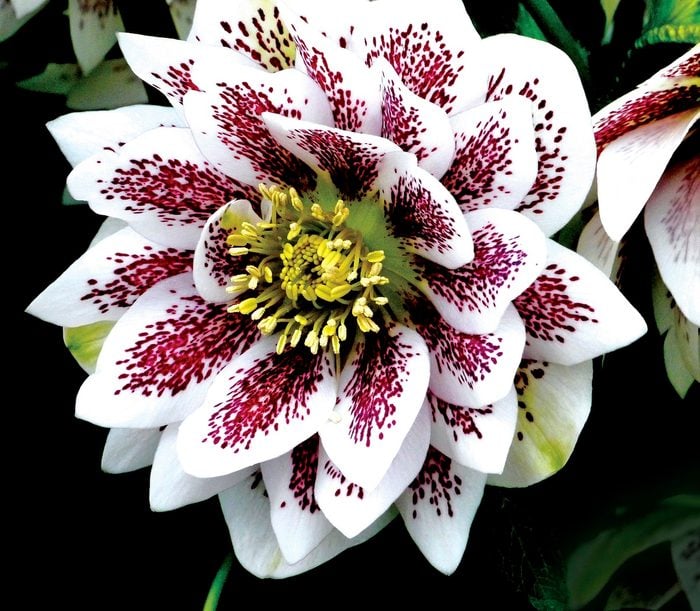 Terra Nova Nurseries
Terra Nova Nurseries
Painted Doubles Hellebore
Helleborus, Zones 5 to 8
Hellebores are among the earliest perennial bloomers. This bicolor variety features fluffy white blooms that look as if they’ve been painted with red brushlike strokes. The flowers sit on top of 12-inch stems.
Why we love it: Three-inch double bicolor flowers burst to life in late winter or early spring. Dark green evergreen foliage adds year-round appeal to any part-shade garden bed or container.
5
/
10
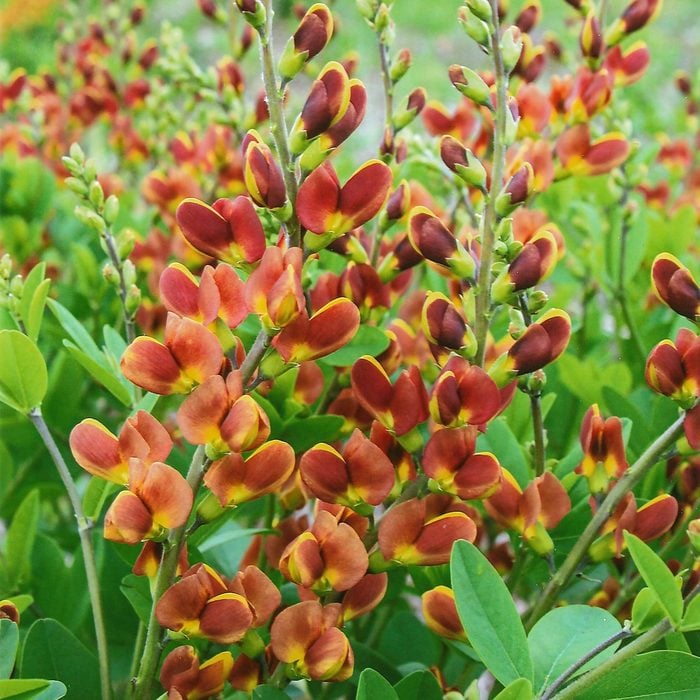 Walters Gardens, Inc Cherries Jubilee false indigo
Walters Gardens, Inc Cherries Jubilee false indigo
False Indigo
Baptisia, Zones 4 to 9
Many types of Baptisia feature bicolor flowers in combos of yellow, purple, brown, pink, violet or white. Plant Cherries Jubilee for a maroon and yellow mix that offers blue-green foliage plus autumn interest.
Why we love it: Plants are long-lived and set decorative pods after flowering ends. Pollinators including bees benefit from the blooms, and caterpillars of some butterflies and moths feed on the foliage.
6
/
10
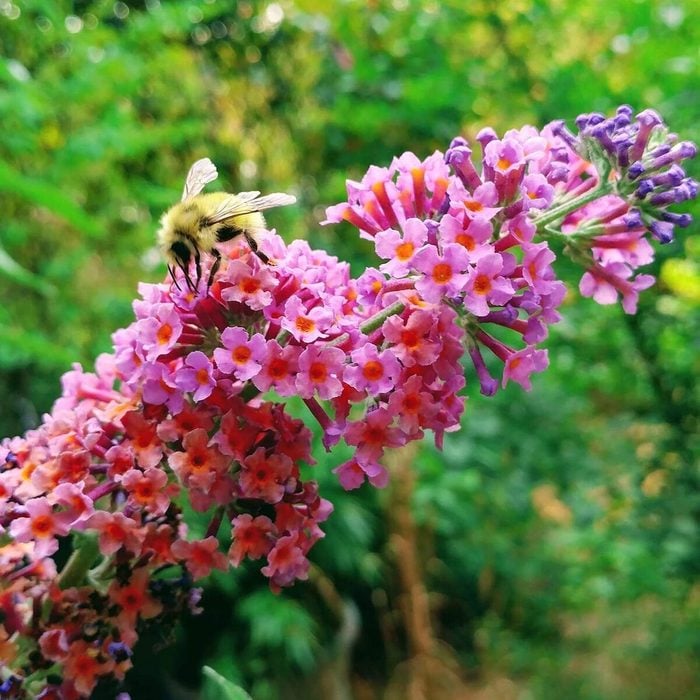 Courtesy Wendy Wiegert
Courtesy Wendy Wiegert
Bicolor Butterfly Bush
Buddleia x weyeriana, Zones 5 to 9
Plant this fast-growing shrub in fall, before the ground freezes. Select a spot that receives full sun and expect this butterfly bush to reach about 5 feet tall and 4 feet wide.
Why we love it: The tiny flowers, in lavender to rose hues with yellow to orange sherbet centers, attract hummingbirds and butterflies. Snip a few flower clusters for an indoor bouquet.
7
/
10
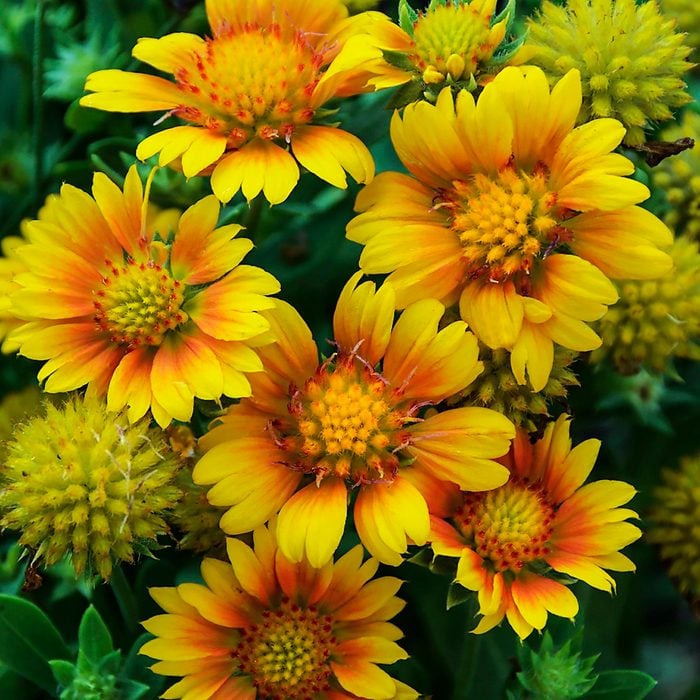 Walters Gardens, Inc Arizona Apricot blanket flower
Walters Gardens, Inc Arizona Apricot blanket flower
Blanket Flower
Gaillardia, Zones 3 to 10
Many blanket flower varieties are bicolored, sporting deep red or pink centers with gold or yellow accents. The two-toned flower heads sit on sturdy stems that grow as tall as 22 inches.
Why we love it: Blanket flowers are native prairie plants—drought-tolerant, sun-loving and critter-resistant (while drawing butterflies, which love them). These short-lived perennials reseed easily.
8
/
10
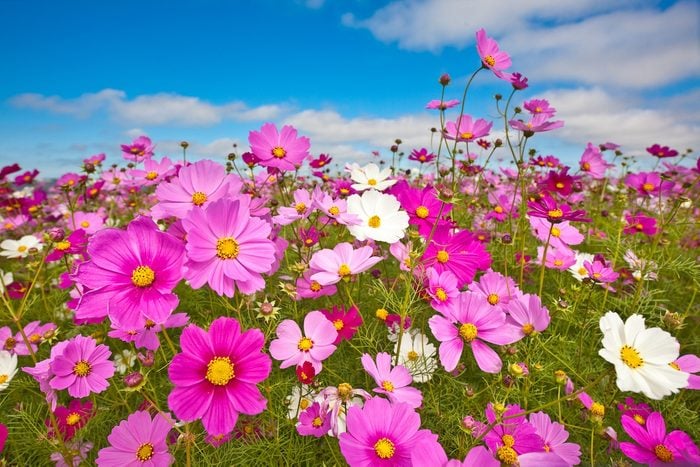 OLIVER911119/SHUTTERSTOCK
OLIVER911119/SHUTTERSTOCK
Cosmos
Cosmos bipinnatus, Annual
With tall, airy stems and upward-cupped petals, cosmos float above the rest of the garden in a white, pink or purple haze. Sunny yellow centers offer an extra pop of color. Grow cosmos in full sun and well-draining soil.
Why we love it: Easy to sow directly in the garden from seed, cosmos provide continuous color from June to frost. Butterflies love these blooms!
9
/
10
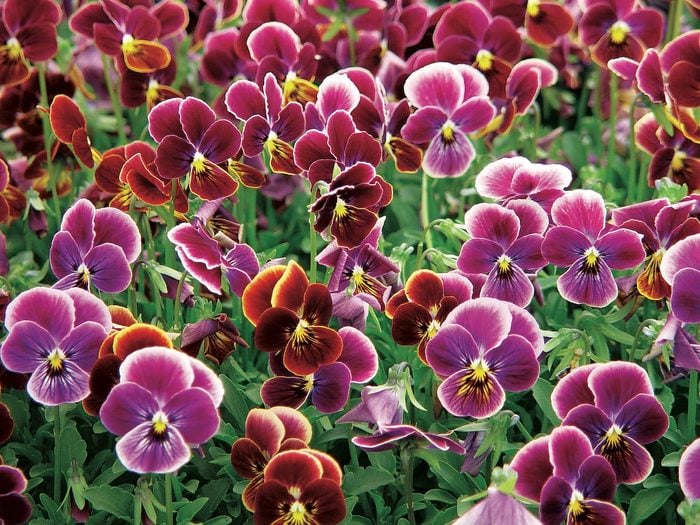 W. Atlee Burpee Co. Psychedelic Spring viola
W. Atlee Burpee Co. Psychedelic Spring viola
Violas and Pansies
Viola, Zones 4 to 9
A lot of pansies and violas have petals with a bicolor pattern. Many people think they look like little smiling faces, which adds to their appeal and charm.
Why we love it: These reliable cool-season favorites are harbingers of spring. When planted in fall, they often overwinter to bloom the following year.
Top design tip: Pair bicolored blooms with foliage plants instead of flowering ones. Check out those with bronze, dark burgundy, white-silver or bronze leaves to use as neutrals. Try alyssum, kale, sweet potato vine, dusty miller, ornamental peppers and alternanthera.
10
/
10
 www.provenwinners.com
www.provenwinners.com
Dianthus
Dianthus barbatus hybrids, Zones 3 to 9
The dianthus known as sweet William usually sets seed in its second year of growth. It grows best in cool weather and may take a break during summer’s heat. Two-color varieties include Sweet Purple White Bicolor and Sweet Magenta Bicolor.
Why we love it: Dianthus exudes a delightful spicy fragrance. The blooms attract butterflies and hummingbirds, and they last more than four weeks.


Comments are closed.